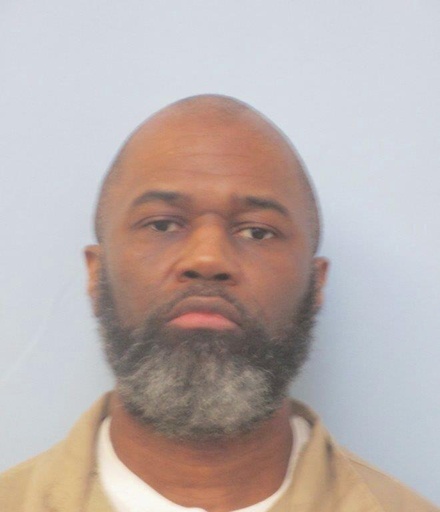
Atmore, Alabama – A man who was found guilty of murdering a woman after invading her home while she slept was executed on Thursday evening, marking Alabama’s fourth use of nitrogen gas for capital punishment. Demetrius Frazier, 52, was declared dead at 6:36 p.m. at a prison in southern Alabama. He faced execution for his conviction stemming from the 1991 rape and murder of Pauline Brown, a 41-year-old woman. This event marked the first execution in Alabama for this year and the third nationwide in 2025, following an execution in Texas on Wednesday and another in South Carolina the previous week.
In his last words, Frazier expressed remorse towards Brown’s family and friends, asserting, “What happened to Pauline Brown should have never happened.” He concluded his statement with “I love everybody on death row. Detroit Strong.” Alongside his apologies, he criticized Michigan Governor Gretchen Whitmer for not intervening after efforts were made to appeal for his transfer back to Michigan, where he had previously been serving a life sentence for another murder prior to being transferred to Alabama.
Frazier’s appeals were supported by his mother and opponents of the death penalty, who urged Governor Whitmer to have him returned to Michigan, where the death penalty is not permitted. Law enforcement indicated that Frazier had confessed to the murder of Brown while in custody in Michigan in 1992. In response to the situation, Whitmer acknowledged that her predecessor had agreed to the transfer of Frazier to Alabama and stated that the decision rested with officials there. “It’s a really tough situation,” she commented, emphasizing Michigan’s stance against capital punishment.
On November 27, 1991, Frazier, aged 19 at the time, forced his way into Brown’s Birmingham apartment while she slept. According to prosecutors, after demanding money, he raped Brown at gunpoint before fatally shooting her in the head. He returned later to look for more valuables.
In a statement released after the execution, Alabama Governor Kay Ivey expressed that justice had been served, stating, “In Alabama, we enforce the law. You don’t come to our state and mess with our citizens and get away with it.” She reiterated that individuals guilty of violent crimes, like kidnapping and murder, do not belong on the streets and that justice for Pauline Brown and her loved ones was achieved.
Frazier had previously received a life sentence in Michigan for the murder of 14-year-old Crystal Kendrick. In 1996, a jury in Alabama convicted him of Brown’s murder, recommending a death sentence by a 10-2 vote. He remained incarcerated in Michigan until 2011 when Michigan and Alabama officials agreed to transfer him to Alabama’s death row. During his final remarks, Frazier suggested that his earlier confession regarding the murder of Kendrick was untrue.
Alabama pioneered the use of nitrogen gas for executions, having carried out three such executions last year. The method involves covering the individual’s face with a gas mask that replaces breathable air with pure nitrogen, leading to death by asphyxiation. Witnesses noted that Frazier, similar to previous individuals executed using this method, displayed some involuntary movements on the gurney, although to a lesser extent compared to others.
The execution process commenced around 6:10 p.m. after a final inspection of the gas mask by corrections staff. Initially, Frazier moved his hands in a circular motion, but by 6:12 p.m., those movements ceased. He appeared to show discomfort, gasping for breath, and after several minutes, his breathing slowed significantly. By 6:21 p.m., there was no visible movement, and the execution chamber curtains were drawn at 6:29 p.m.
John Hamm, Alabama’s Corrections Commissioner, reported that the gas flowed for approximately 18 minutes and that Frazier had no heartbeat 13 minutes after the gas began its flow. Hamm stated he believed that Frazier lost consciousness rapidly and that the subsequent movements were involuntary reactions.
Just days prior, a federal judge dismissed efforts to halt the execution, despite defense attorneys’ claims that the method could not deliver a swift death as promised. Media witnesses had previously observed that those executed via this method exhibited involuntary shaking.
Abraham Bonowitz of Death Penalty Action criticized the method as “experimental gas suffocation,” suggesting it required greater examination by federal courts before future use in Alabama.
Some of Brown’s family members were present during the execution; however, they opted not to comment to the press afterward. In the hours leading up to his execution, Frazier shared moments with his mother, sister, and legal representatives while enjoying a final meal that included items from Taco Bell, such as burritos and a Mountain Dew.

